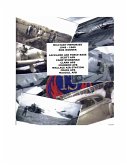There are several underlying factors that led to the attack on Pearl Harbor. After Japan invaded Manchuria (1931) the League of Nations (1933) condemned the Japanese for their aggressive action that prompted their delegation to walk out of the organization. Ignoring all previous agreements, the Japanese Government (1936) embarked on a massive expansion of their naval force. In December 1937, while escorting American oil tankers along the Yangtze River, Japanese aircraft sank the USS Panay. Although there was no retaliation the United States State Department made a strong protest. In 1938 Japan closed its "Open Door" policy prompting the United States to renounce its trade treaty with Japan and placed an embargo on metal exports to Japan. In May 1940, with tensions rising throughout the Pacific, Pearl Harbor became the main Pacific base for the United States fleet. In July 1941 the United States placed an embargo on all strategic exports to Japan and froze Japan's assets in the United States. While WW2 stories are a big part of this book, there are many other events, places and people that are brought to life in this autobiography.








